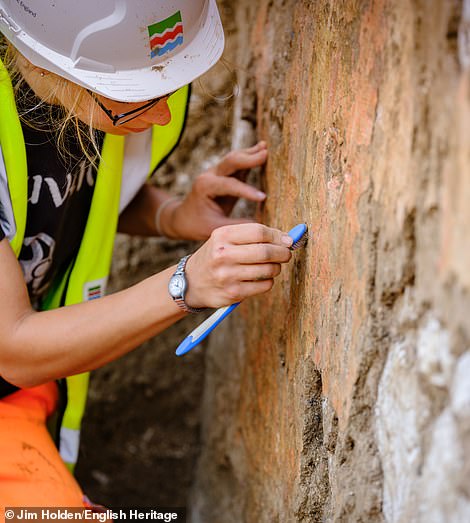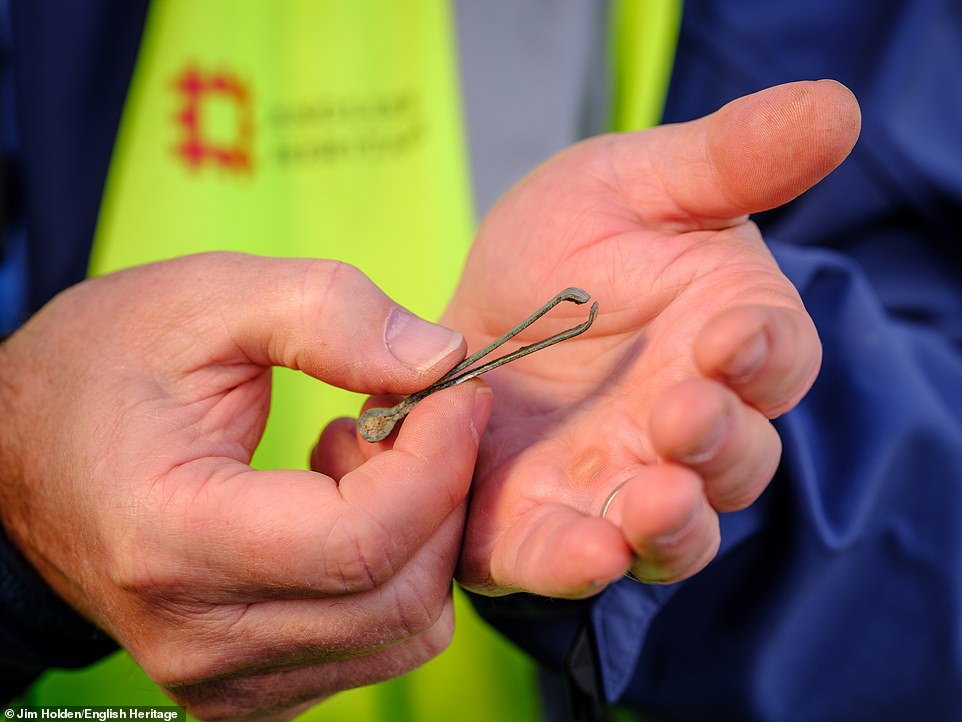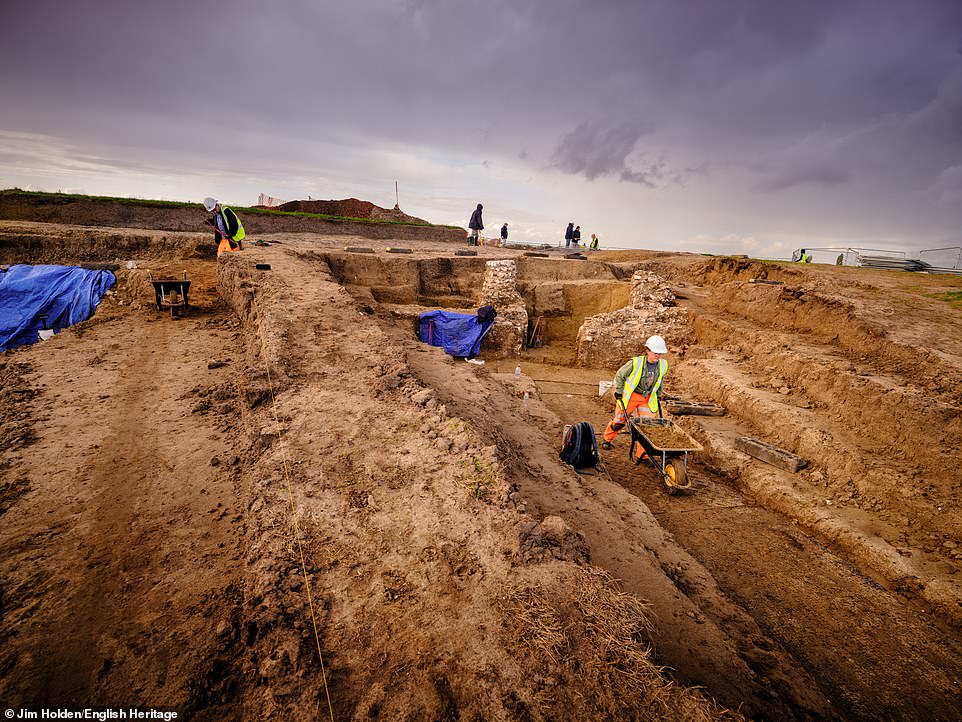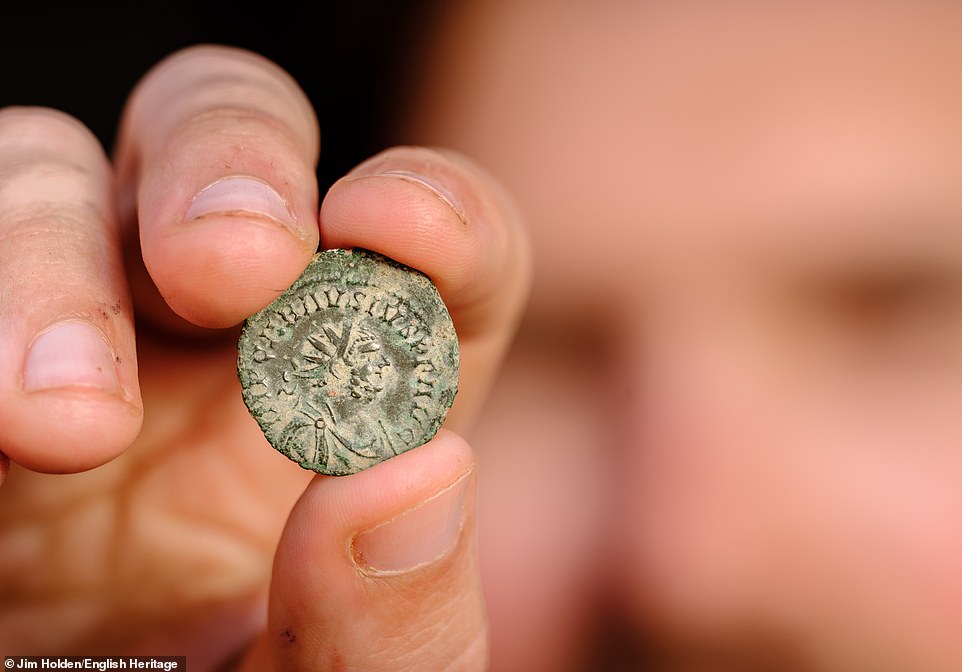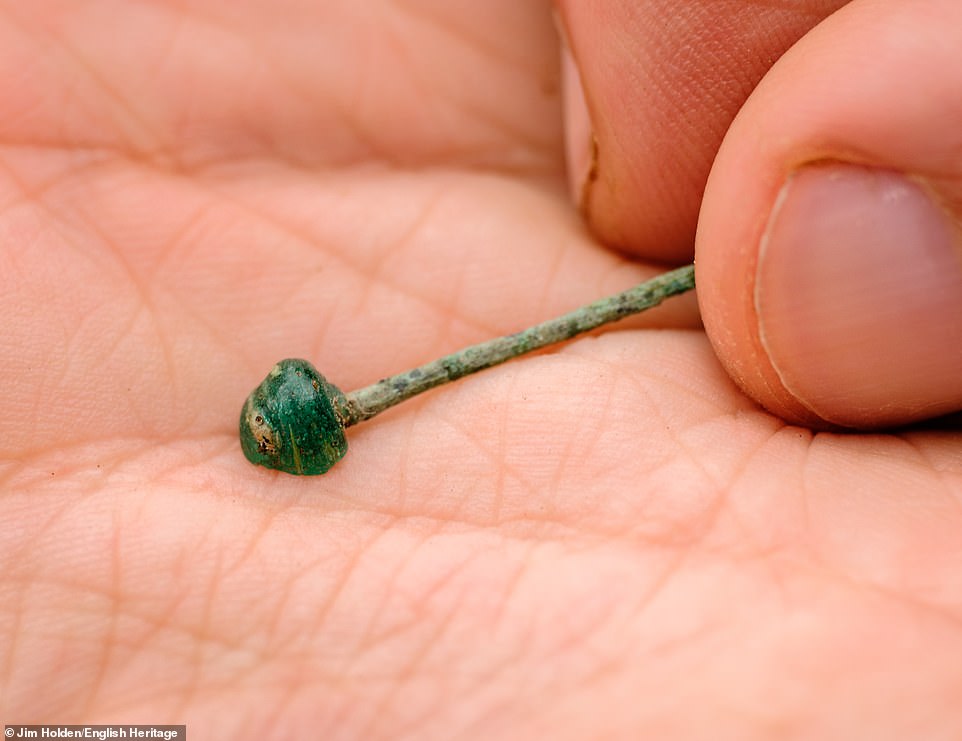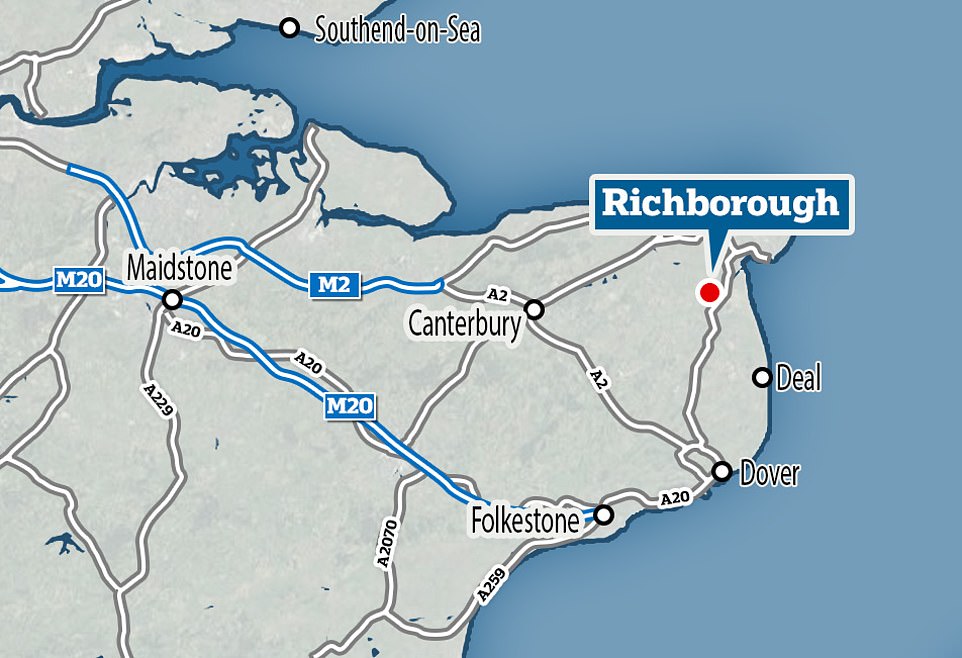The room where Roman gladiators waited to die in Britain: Holding cell is discovered in an amphitheatre in Kent where wild animals and fighters were held ahead of their fights 2,000 years ago
- Archaeologists have found a room at Kent amphitheatre where Roman gladiators waited to meet their deaths
- The holding cell is believed to have been used for gladiators and criminals in Richborough 2,000 years ago
- Experts have known about the amphitheatre since 1849 but the latest dig led to a number of new discoveries
- Among finds were coins, pottery fragments and skeleton of a pet cat that archaeologists nicknamed Maxipus
- It is now thought the arena may have been built in the 1st century AD and became defunct by the 3rd century
28 October 2021
It was once a grand Roman amphitheatre that entertained 5,000 spectators with gladiatorial contests, wild beast hunting and the odd execution of a criminal on the Kent coast.
And now archaeologists have uncovered evidence of a holding cell for those who were about to meet their fate in the ancient arena in Richborough 2,000 years ago, English Heritage has revealed.
Experts have known about the amphitheatre since 1849 but the latest dig led to new finds including coins, pottery fragments and even the almost complete skeleton of a pet cat that archaeologists have nicknamed Maxipus.
It is now thought the amphitheatre at Richborough, north of Sandwich, may have been built early in the Roman period in the 1st century AD and became defunct by the 3rd century.
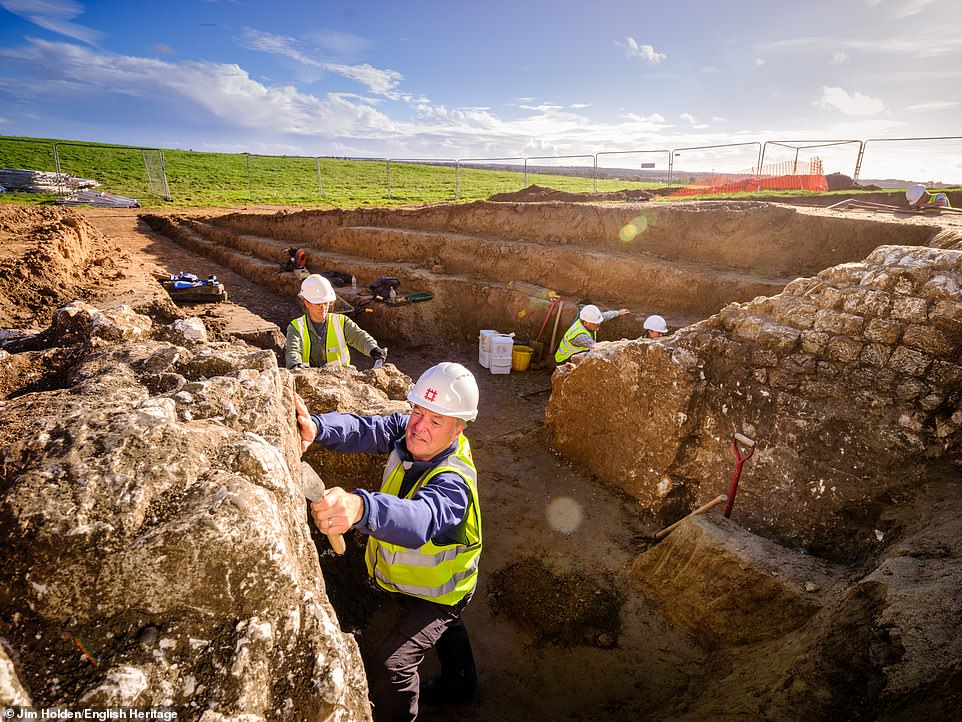
It was once a grand Roman amphitheatre that entertained 5,000 spectators with gladiatorial contests, wild beast hunting and the odd execution of a criminal on the Kent coast. And now English Heritage archaeologists (pictured) have uncovered evidence of a holding cell for those who were about to meet their fate in the ancient arena in Richborough 2,000 years ago
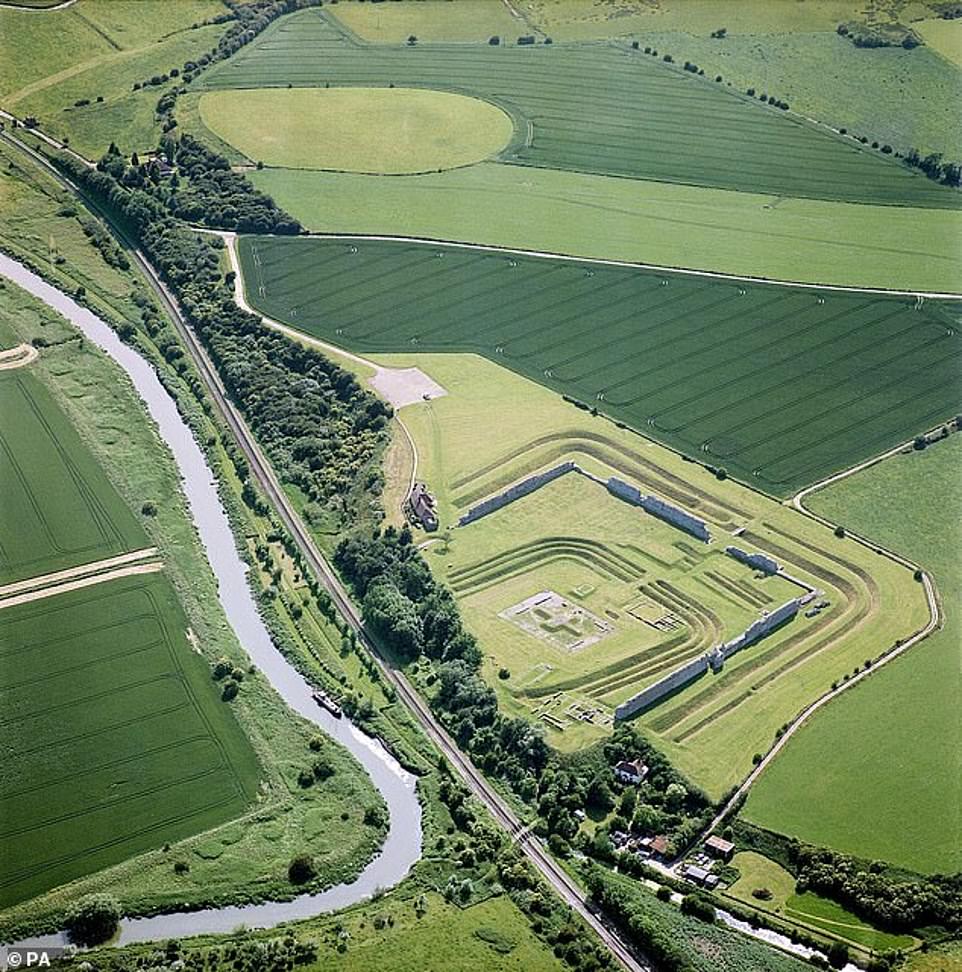
It is now thought the amphitheatre at Richborough (pictured), north of Sandwich, may have been built early in the Roman period in the 1st century AD and became defunct by the 3rd century
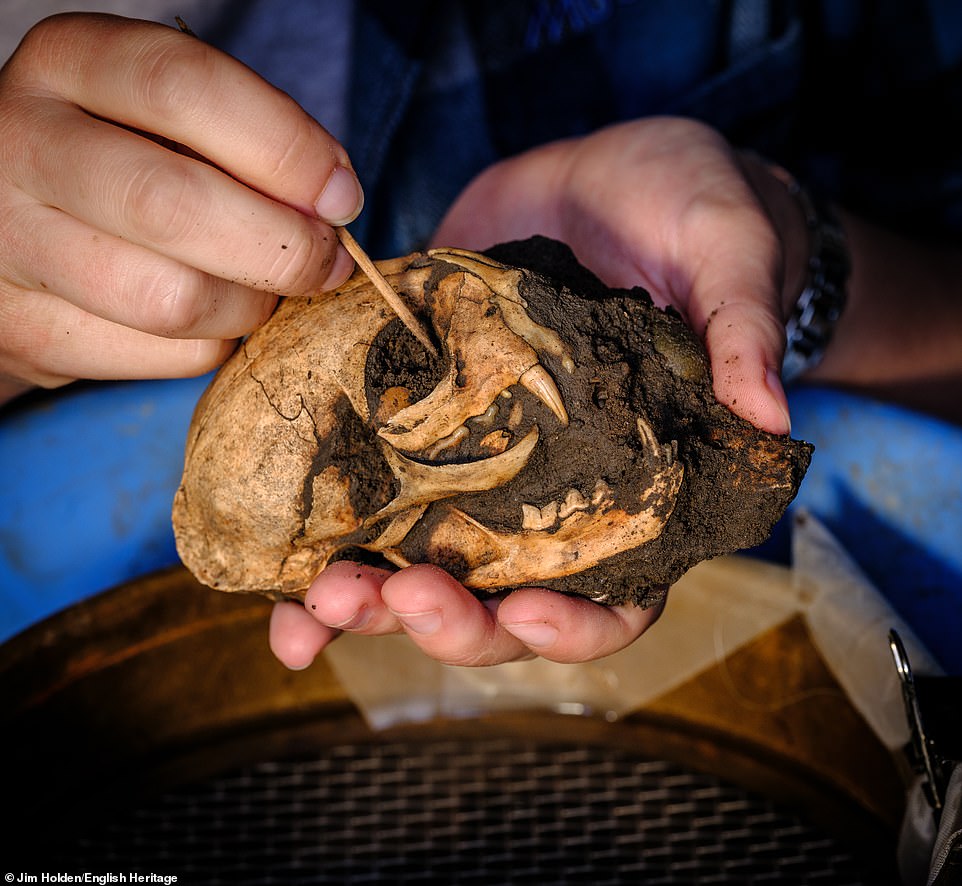
Experts have known about the amphitheatre since 1849 but the latest dig led to new finds including coins, pottery fragments and even the almost complete skeleton of a pet cat that archaeologists have nicknamed Maxipus (pictured)
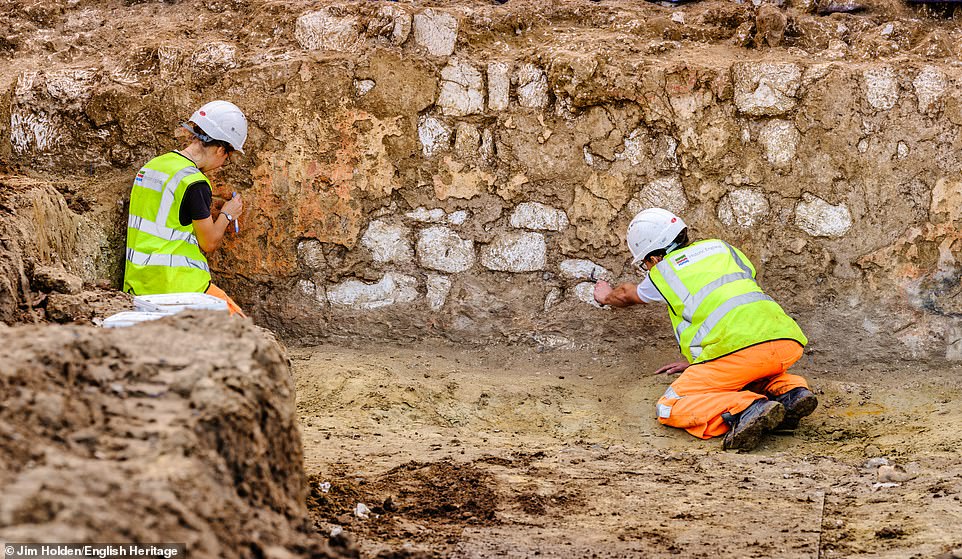
The excavation also uncovered traces of painted decoration to the plaster face of the arena wall, which is the first known instance of this on any Roman amphitheatre in Britain, English Heritage said
What do we know about the Richborough Roman amphitheatre?
The Roman fort and amphitheatre of Richborough, in Kent, is a key site in the history of Roman Britain.It was used throughout the occupation from the invasion of 43 AD until the end of Roman rule around 410.
The settlement, named Rutupiae or Portus Ritupis, was unique in this sense because it witnessed both the beginning and the end of Roman rule.
Temples, an amphitheatre, and a mansio — an official stopping place on a Roman road — were added as Richborough's reputation and riches grew.
It was renowned throughout the Empire for the quality of its oysters, and competed fiercely with Portus Dubris — modern Dover — around 15 miles away.
During the late 3rd century, the civilian town was converted into a Saxon shore fort, part of a Channel-wide system in England and France to repel pirates.
After Roman rule, Rutupiae and its amphitheatre were buried under grassy plains by the passage of time.
